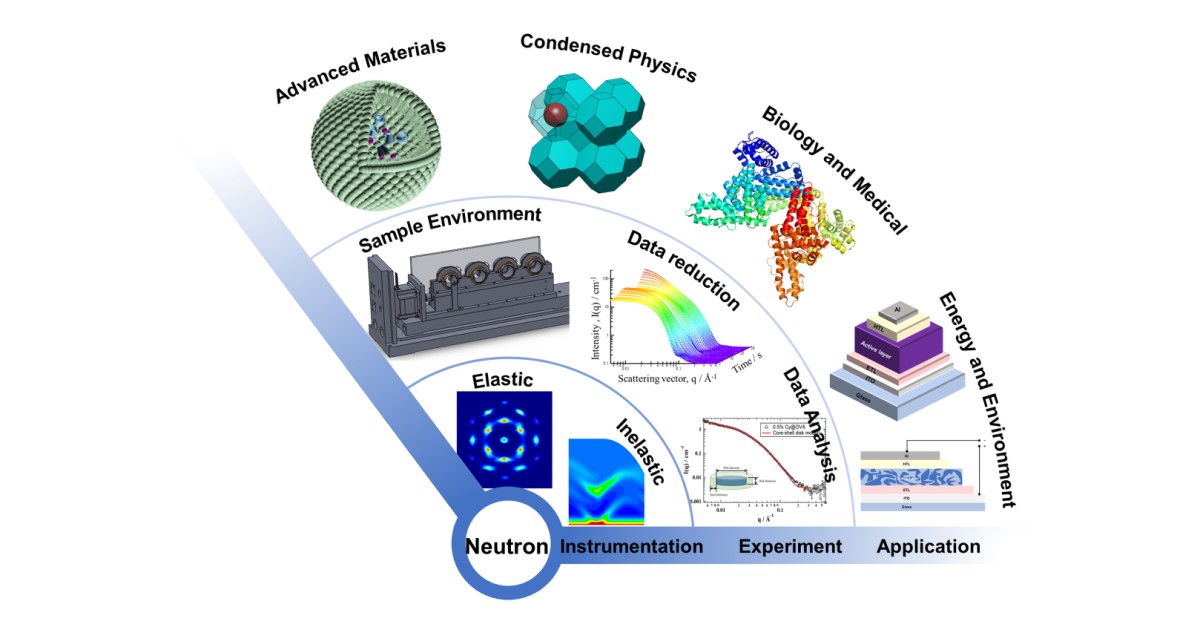Neutron Scattering and Its Applications
A special issue of Applied Sciences (ISSN 2076-3417). This special issue belongs to the section "Optics and Lasers".
Deadline for manuscript submissions: 20 April 2024 | Viewed by 407

Special Issue Editors
2. Spallation Neutron Source Science Center, Dongguan 528303, China
Interests: small-angle neutron scattering; precipitation kinetics; nano-structure
Special Issue Information
Dear Colleagues,
Neutron scattering has become an indispensable tool for the investigation of the structure and dynamics of condensed matter, for which Brockhouse and Shull were awarded with the Nobel Prize in 1994. With the development of reactor and spallation neutron sources, novel diffractometer- or spectrometer-based elastic and inelastic neutron scattering techniques have been developed. The advancement in neutron instrumentation makes it possible to unravel the structure and dynamic processes across space- and time- scales covering multiple orders of magnitude. As one of the cutting-edge technologies, neutron scattering finds applications in a diverse range of fields, including advanced materials, condensed physics, medical biology, energy and environment. This research topic welcomes original research papers, review articles and perspectives from, but not limited to, the following aspects:
- The fundamentals of neutron scattering and novel technologies ;
- Applications of elastic or inelastic neutron scattering techniques in multidisciplinary fields;
- Methods for neutron scattering data reduction, analysis and simulation;
- Recent developments in methodology, instrumentation, sample environment equipment and optical devices for neutron techniques.
Dr. Yubin Ke
Dr. Hanqiu Jiang
Guest Editors
Manuscript Submission Information
Manuscripts should be submitted online at www.mdpi.com by registering and logging in to this website. Once you are registered, click here to go to the submission form. Manuscripts can be submitted until the deadline. All submissions that pass pre-check are peer-reviewed. Accepted papers will be published continuously in the journal (as soon as accepted) and will be listed together on the special issue website. Research articles, review articles as well as short communications are invited. For planned papers, a title and short abstract (about 100 words) can be sent to the Editorial Office for announcement on this website.
Submitted manuscripts should not have been published previously, nor be under consideration for publication elsewhere (except conference proceedings papers). All manuscripts are thoroughly refereed through a single-blind peer-review process. A guide for authors and other relevant information for submission of manuscripts is available on the Instructions for Authors page. Applied Sciences is an international peer-reviewed open access semimonthly journal published by MDPI.
Please visit the Instructions for Authors page before submitting a manuscript. The Article Processing Charge (APC) for publication in this open access journal is 2400 CHF (Swiss Francs). Submitted papers should be well formatted and use good English. Authors may use MDPI's English editing service prior to publication or during author revisions.
Keywords
- neutron scattering
- structure
- dynamic process
- multidiscipline application
- sample environment
- neutron instrumentation
- data treatment





